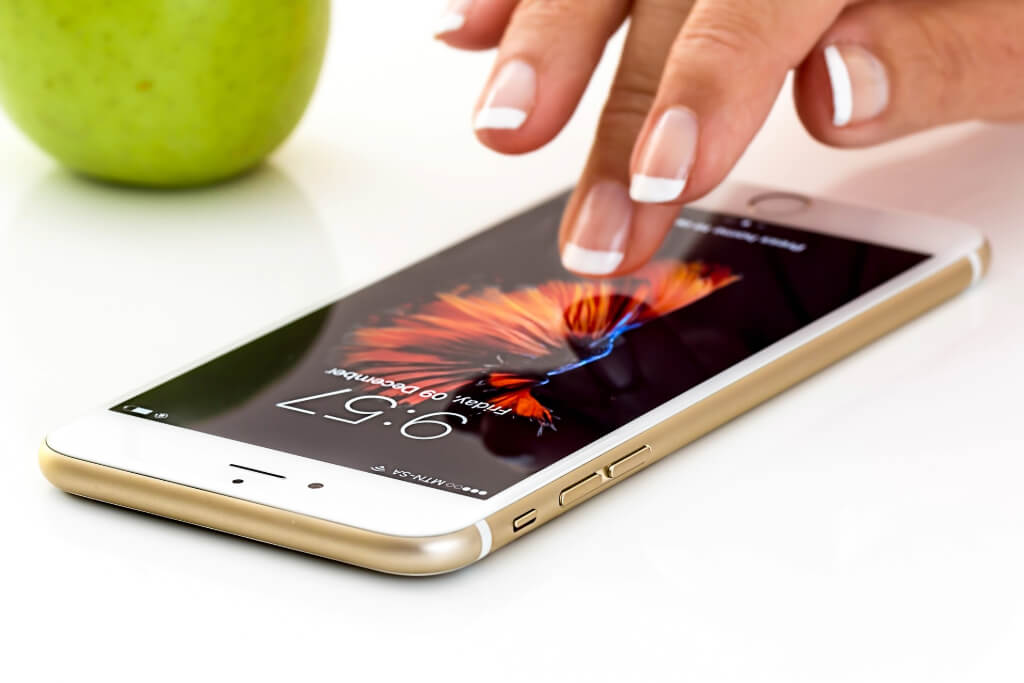Communication has undergone a remarkable transformation throughout human history, with the invention of phones playing a pivotal role in shaping the way we connect. The journey of phones spans centuries, and understanding their evolution is crucial to appreciating the technological marvels we use daily. In this article, we will delve into the fascinating history of phones, exploring their origins, development, and the impact they have had on society.

The Early Years
The concept of distant communication dates back to ancient times when smoke signals, carrier pigeons, and other ingenious methods were employed. However, the birth of phones as we know them today can be traced to the 19th century. In 1876, Alexander Graham Bell, a Scottish-born inventor, achieved a groundbreaking milestone by inventing the first practical telephone.
Alexander Graham Bell’s Invention
Alexander Graham Bell’s fascination with sound and speech led him to experiment with various devices aimed at transmitting voice over a wire. On March 10, 1876, Bell successfully transmitted the first intelligible speech using his newly invented telephone. Legend has it that his famous words to his assistant, Thomas Watson, were, “Mr. Watson, come here, I want to see you.” This moment marked the birth of the telephone and paved the way for a communication revolution.
The Evolution Of Phones
In the years following Bell’s invention, the telephone underwent rapid development and improvements. Early telephones were bulky and had limited range, but engineers and inventors were determined to enhance their functionality. By the end of the 19th century, telephones had become more widespread, connecting people across cities and even countries.
The Rise Of The Telephone Industry
As the demand for telephones grew, so did the need for a reliable infrastructure to support this revolutionary form of communication. Telephone companies were established to build and manage networks, laying the groundwork for the telephone industry. By the early 20th century, major cities were equipped with telephone exchanges, allowing users to make calls with unprecedented ease.
The Rotary Dial And Telephone Booths
One iconic feature of early telephones was the rotary dial, introduced in the 1890s. This mechanical interface allowed users to select phone numbers by rotating a dial with numbered finger holes. Rotary dials became synonymous with telephones for several decades, representing a tangible link to the past. Additionally, telephone booths, a familiar sight on street corners, provided private spaces for individuals to make calls before the era of mobile phones.
The Advent Of Mobile Phones
While landline telephones dominated the communication landscape for most of the 20th century, the latter half brought about a seismic shift with the introduction of mobile phones. The concept of wireless communication had been explored since the early 20th century, but it wasn’t until the 1970s that the first truly mobile phone was developed.
Martin Cooper, an engineer at Motorola, made history in 1973 when he placed the first-ever mobile phone call. The device, known as the Motorola DynaTAC 8000x, weighed about 2.2 pounds and had a battery life of around 30 minutes. Despite its limitations, this invention laid the groundwork for the mobile revolution that would unfold in the coming decades.
The Digital Era And Smartphones
As technology advanced, phones evolved from analog to digital, and the 1990s saw the emergence of the first commercially available smartphones. These early smartphones combined the functionality of a mobile phone with features like email, calendars, and basic internet access. However, it was not until the 21st century that smartphones truly revolutionized the way we communicate.
The advent of the iPhone in 2007 marked a turning point, ushering in the era of modern smartphones. Apple’s iconic device combined a sleek design with a user-friendly interface, touchscreen capabilities, and access to the App Store. Smartphones have become an integral part of daily life, transforming communication, entertainment, and productivity.

Phones In The 21st Century
In the 21st century, phones have become more than just communication devices. They are multifunctional tools that connect us to the world and each other. From social media and instant messaging to high-quality cameras and virtual assistants, modern phones offer a myriad of once-unimaginable features.
The Impact On Society
The invention and evolution of phones have had a profound impact on society. Communication barriers have been shattered, allowing for instant connection between individuals regardless of geographical distance. The ability to carry a powerful computing device in our pockets has changed the way we work, learn, and entertain ourselves.
The journey of phones from Alexander Graham Bell’s groundbreaking invention to the sophisticated smartphones of today is a testament to human ingenuity and our unceasing desire to connect. The word “phones” now represents a broad spectrum of devices that have shaped the way we live our lives. As we continue to witness advancements in technology, it is essential to reflect on the humble beginnings of phones and appreciate the remarkable progress that has brought us to the interconnected world we inhabit today.
The Invention Of The Telephone
Communication has been an integral part of human civilization, driving progress and connectivity across vast distances. However, before the invention of the telephone, long-distance communication was limited and cumbersome. In the late 19th century, Alexander Graham Bell revolutionized communication with his groundbreaking invention – the telephone. This article explores the journey of the invention of the telephone, from its humble beginnings to its transformative impact on society.
Pre-Telephone Communication Methods
Before the invention of the telephone, communication over long distances relied heavily on written correspondence, semaphore systems, and primitive telegraph machines. These methods were often slow, unreliable, and limited in scope. The need for a more efficient and immediate form of communication was evident, paving the way for the invention of the telephone.
The Life Of Alexander Graham Bell
Alexander Graham Bell, born in Scotland in 1847, was a visionary inventor and scientist with a keen interest in communication technology. His early experiences, including his family’s involvement in the study of elocution and his work with the deaf, influenced his fascination with sound and speech. Bell’s relentless pursuit of innovation and his desire to improve communication for the deaf ultimately led to his invention of the telephone.
The Race To Invent The Telephone
During the late 19th century, Bell was not alone in his quest to develop a communication device that could transmit sound over long distances. Inventors such as Elisha Gray and Antonio Meucci were also working on similar technologies. The race to patent the invention of the telephone sparked legal battles and controversy, with Bell ultimately receiving the patent in 1876. However, the contributions of other inventors to the development of early communication devices cannot be overlooked.
The Invention Of The Telephone
In 1876, Alexander Graham Bell made history with the invention of the telephone. Through a series of experiments and innovations, Bell successfully transmitted sound waves over a wire, effectively creating the first working telephone. His invention revolutionized communication, allowing individuals to converse in real-time over long distances, bridging gaps and connecting people like never before.
Early Reception And Impact
The invention of the telephone sparked excitement and curiosity among the public. Early adopters marveled at the device’s ability to transmit speech, while skeptics questioned its practicality and reliability. Despite initial challenges, the telephone quickly gained popularity, leading to the establishment of telephone networks and the proliferation of communication across vast regions.
Evolution Of The Telephone
Over the decades following its invention, the telephone underwent significant technological advancements. From rotary dials to push-button keypads, and from analog to digital transmission, the telephone evolved to meet the changing needs of society. Innovations such as voicemail, caller ID, and mobile phones further transformed the way we communicate, building upon Bell’s original invention.

Societal Impact Of The Telephone
The invention of the telephone had profound implications for society, revolutionizing the way we communicate, conduct business, and connect. Telephone networks facilitated rapid communication, enabling the exchange of information, ideas, and commerce on a global scale. The telephone became a symbol of progress and modernity, shaping social interactions and fostering closer ties between individuals and communities.
Legacy Of The Telephone
The invention of the telephone left an indelible mark on human history, laying the groundwork for future innovations in telecommunications. From landlines to smartphones, the legacy of Alexander Graham Bell’s invention continues to resonate in today’s digital age. The telephone remains a cornerstone of modern communication, reminding us of the power of human ingenuity and the enduring impact of invention.
The invention of the telephone by Alexander Graham Bell marked a turning point in the history of communication. From its humble beginnings to its far-reaching impact on society, the telephone revolutionized the way we connect and communicate. As we reflect on the legacy of this groundbreaking invention, we are reminded of the boundless potential of human creativity and the profound influence of innovation on our lives.
Exploring Early Telecommunication Devices
Communication has always been vital to human civilization, driving progress, fostering connections, and enabling the exchange of ideas. Throughout history, various methods have been devised to overcome the challenges of long-distance communication. In this article, we will delve into the fascinating world of early telecommunication devices, exploring their evolution and impact on modern communication technology.
Ancient Methods Of Communication
Before the advent of sophisticated telecommunication devices, ancient civilizations developed ingenious methods to transmit messages across long distances. From the use of smoke signals by Native American tribes to the employment of carrier pigeons by the ancient Greeks, these early methods laid the groundwork for future innovations in communication. Despite their effectiveness within certain limitations, such as dependence on favorable weather conditions or the availability of trained birds, these methods demonstrated humanity’s ingenuity in overcoming geographical barriers.
The Telegraph: A Milestone In Communication
The invention of the telegraph in the early 19th century marked a significant leap forward in communication technology. Developed independently by inventors such as Samuel Morse and William Cooke, the telegraph utilized electrical signals to transmit messages over long distances. With the introduction of Morse code, a system of dots and dashes representing letters and numbers, the telegraph enabled rapid and efficient communication across continents. This groundbreaking invention revolutionized global communication networks and laid the foundation for subsequent telecommunication advancements.
Early Telecommunication Devices
Before the invention of the telephone, several early telecommunication devices played crucial roles in facilitating communication over vast distances. Among these devices were the optical telegraph, semaphore line, and heliograph. The optical telegraph, also known as a semaphore system, utilized visual signals, such as flags or lights, to transmit messages between distant locations. Similarly, the heliograph employed sunlight reflected off a mirror to convey messages over long distances, particularly in mountainous terrain. While these devices were limited in range and required clear visibility, they represented significant advancements in long-distance communication during their time.
The Acoustic Telecommunication Era
During the 19th century, the development of acoustic telegraphy introduced a new method of transmitting messages using sound. Acoustic telegraphs, such as the acoustic coupler and the speaking tube, utilized sound waves to convey messages over short to moderate distances. These devices relied on the amplification and modulation of sound to transmit signals, enabling communication in environments where visual methods were impractical or ineffective. Although limited in range compared to electrical telegraphs, acoustic telecommunication devices played a vital role in various industries and military operations.
The Invention Of The Telephone: Revolutionizing Communication
In 1876, Alexander Graham Bell’s invention of the telephone marked a pivotal moment in the history of communication. Unlike previous telecommunication devices, the telephone allowed for the transmission of voice in real time, revolutionizing interpersonal communication. Bell’s invention quickly gained popularity and transformed society by facilitating instant communication over long distances. The telephone laid the foundation for modern telecommunications infrastructure and paved the way for future innovations in communication technology.
Comparison Of Early Telecommunication Devices
When comparing early telecommunication devices, it becomes evident that each device had its unique mechanisms, limitations, and effectiveness. While optical telegraphs and semaphore lines were effective for transmitting visual signals over relatively short distances, they were limited by line-of-sight requirements and weather conditions. In contrast, acoustic telegraphs offered greater flexibility and mobility but were constrained by their limited range and susceptibility to environmental noise. The invention of the electrical telegraph and, later, the telephone, addressed many of these limitations, leading to the development of more robust and efficient communication systems.

Impact Of Early Telecommunication Devices
The advent of early telecommunication devices had a profound impact on society, commerce, and military operations. These devices facilitated the rapid exchange of information, enabling businesses to communicate more efficiently and governments to coordinate logistical operations. Additionally, they played a crucial role in shaping cultural exchange and fostering international cooperation. The development of telecommunication networks laid the groundwork for the global interconnectedness that defines the modern world.
Legacy Of Early Telecommunication Devices
The legacy of early telecommunication devices is evident in the modern communication systems that we rely on today. From the telegraph to the telephone, these inventions paved the way for the development of wireless communication, satellite networks, and the Internet. While technology has evolved significantly since the days of semaphore lines and acoustic telegraphs, the principles of long-distance communication established by these early devices remain fundamental to our interconnected world.
Early telecommunication devices played a crucial role in shaping the way we communicate and connect. From ancient methods of visual signaling to the invention of the telephone, each device represented a significant advancement in overcoming the barriers of distance and time. As we continue to embrace new technologies and innovations in communication, it is essential to acknowledge and appreciate the contributions of these early pioneers to the evolution of modern communication systems.
The Evolution Of Telephone Patents
Patents play a crucial role in protecting intellectual property and fostering innovation. In the realm of telecommunications, telephone patents have been instrumental in shaping the industry since its inception. These patents not only protect the inventors’ rights but also drive competition and technological advancement. This article delves into the history, legal battles, and impact of telephone patents on the telecommunications landscape.
The Early Days Of Telephone Patents
The story of telephone patents begins with Alexander Graham Bell’s filing of the first telephone patent in 1876. This patent, granted for his invention of the telephone, marked the beginning of a new era in communication. However, Bell’s patent sparked controversy and legal battles, particularly with Elisha Gray, who also claimed to have invented a similar device. The ensuing patent disputes highlighted the importance of intellectual property rights in the emerging telecommunications industry.
Patent Wars: Bell VS Gray
The patent wars between Alexander Graham Bell and Elisha Gray underscored the fierce competition in the early days of telephone technology. While Bell ultimately prevailed in securing the foundational patents for the telephone, Gray’s contributions to the field were not overlooked. The legal battles between these inventors shaped the trajectory of telephone patents and laid the groundwork for future patent litigation in the telecommunications industry.
Expansion And Consolidation
As the telecommunications industry grew, so did the number of telephone patents filed. Telephone companies and inventors sought to protect their intellectual property through patents, leading to a proliferation of patents related to telephone systems, components, and technologies. This period of expansion and consolidation saw the formation of large telecommunications companies and the establishment of patent portfolios to defend against infringement claims and maintain market dominance.
Technological Advancements And Patenting
Technological advancements in telecommunication, such as the development of switchboards and transmission technologies, spurred a wave of patent filings. Innovators sought to patent their inventions to secure exclusive rights and gain a competitive edge in the rapidly evolving industry. Patents played a crucial role in incentivizing research and development, driving innovation, and improving the efficiency and reliability of telephone systems.
Regulatory Framework: Patent Policies And Standards
Government regulations and patent policies also played a significant role in shaping the telecommunications industry. Standards organizations, such as the International Telecommunication Union (ITU), established industry standards to ensure interoperability and compatibility among telephone systems. Patents played a dual role in this regulatory framework, both as tools for protecting intellectual property and as mechanisms for contributing to industry standards through licensing agreements.
Patent Strategies Of Telephone Companies
Telephone companies employed various patent strategies to safeguard their interests and maintain market dominance. Cross-licensing agreements and patent pools became common practices to mitigate the risk of litigation and foster collaboration among competitors. These strategies allowed companies to leverage each other’s patents to develop new technologies and expand their product offerings, ultimately benefiting consumers and driving innovation in the industry.
Patenting In The Digital Age
In the digital age, telephone patents continue to play a vital role in shaping the telecommunications landscape. Patents related to digital telephony, mobile communications, and internet technologies are driving innovation and competition in the industry. However, the proliferation of patents has also led to concerns about patent trolls and litigation abuse, prompting calls for patent reform and greater transparency in the patenting process.
Impact Of Telephone Patents On Innovation
The impact of telephone patents on innovation in the telecommunications industry cannot be overstated. By providing inventors with exclusive rights to their inventions, patents incentivize investment in research and development, driving technological progress and improving the quality of telecommunications services. However, striking a balance between protecting intellectual property rights and promoting competition remains a challenge in the ever-evolving landscape of telephone patents.
Final Thoughts
Telephone patents have played a central role in shaping the evolution of the telecommunications industry. From the legal battles of the early days to the complex patent strategies of modern corporations, patents have influenced innovation, competition, and regulatory policies in the industry. As technology continues to advance, the role of telephone patents in driving progress and shaping the future of telecommunications remains as critical as ever.
FAQs
Who Invented The Telephone?
Alexander Graham Bell is credited with inventing the telephone in 1876.
What Was The Significance Of The Invention Of The Telephone?
The invention of the telephone revolutionized communication, allowing individuals to converse in real-time over long distances and paving the way for modern telecommunications technology.
How Did The Invention Of The Telephone Impact Society?
The telephone facilitated rapid communication, enabling the exchange of information, ideas, and commerce on a global scale. It transformed social interactions and fostered closer ties between individuals and communities.
What Were Some Of The Earliest Telecommunication Devices?
Early telecommunication devices included optical telegraphs, semaphore lines, and acoustic telegraphs, among others.
How Did Early Telecommunication Devices Impact Society?
Early telecommunication devices facilitated rapid communication, enabling businesses, governments, and individuals to exchange information over long distances, thereby shaping commerce, military operations, and cultural exchange.
What Was The Significance Of The Invention Of The Telephone?
The invention of the telephone revolutionized communication by allowing for the transmission of voice in real-time, thereby transforming interpersonal communication and laying the foundation for modern telecommunications infrastructure.
What Are Telephone Patents?
Telephone patents are legal protections granted to inventors for their inventions related to telecommunication technology, including telephone systems, components, and processes.
Why Are Telephone Patents Important?
Telephone patents encourage innovation by providing inventors with exclusive rights to their inventions, incentivizing investment in research and development. Additionally, patents drive competition and help maintain market dominance in the telecommunications industry.
How Do Telephone Patents Impact Consumers?
Telephone patents contribute to the development of new technologies and improved telecommunications services, benefiting consumers with enhanced functionality, reliability, and efficiency in communication.
Also Read: When Were Airplanes Invented?
